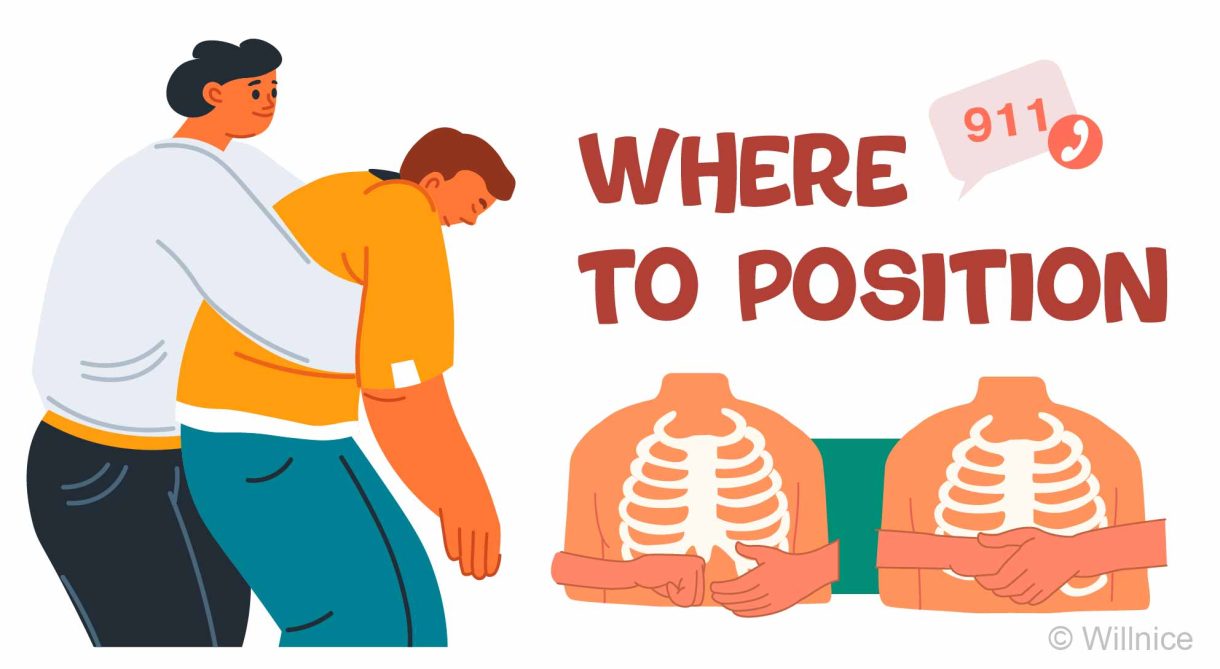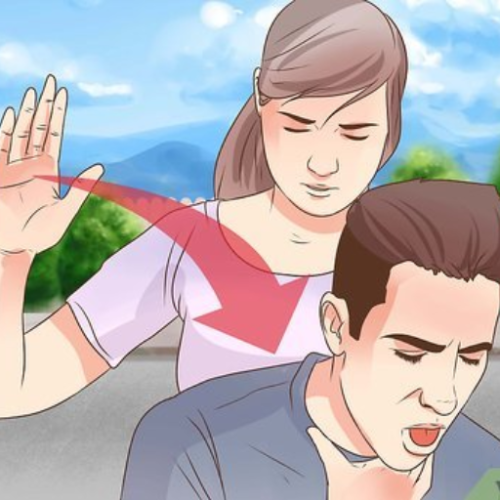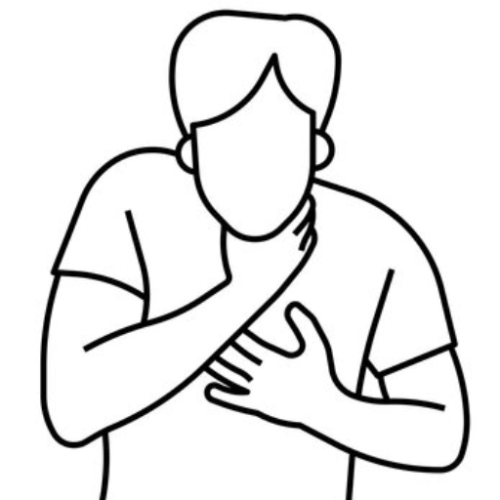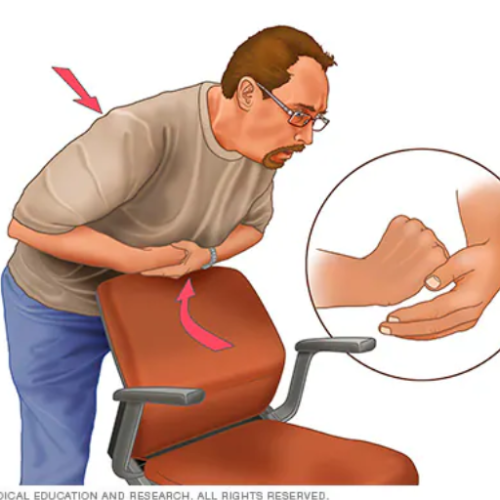
Preface:
You may already know that you should give abdominal thrusts to a conscious adult who is choking, but you might not be aware of when to give them, where to position your fist, or the required precision and direction of the thrusts.
This ultimate guide covers all these details, offering step-by-step instructions with illustrations to help you effectively and safely save a life from choking.
What Are Abdominal Thrusts?
Abdominal thrusts, commonly known as the Heimlich maneuver, are a choking first-aid technique used to clear airway obstructions and save lives.
Abdominal thrusts work by lifting the diaphragm and forcing air from the lungs to create an artificial cough. This cough moves air through the airway, helping to push and expel the obstruction from the airway and throat.
While this maneuver can be life-saving and is generally safe, incorrect execution may cause serious abdominal injuries. Therefore, it’s crucial to learn how to perform this technique safely.
Conditions for Using Abdominal Thrusts
- Perform on individuals who are choking and unable to cough, speak, or breathe. The choking victim must be conscious.
- Not recommended for infants under one year old.
- Not recommended for pregnant women.
- You can perform abdominal thrusts on yourself, also known as the self-Heimlich maneuver.
Perform Abdominal Thrusts on Choking Adults: A Step-By-Step Guide
Note:
Before giving abdominal thrusts, first ask the person, 'Are you choking? Can you speak?' Do not perform first aid if the individual can cough forcefully and speak, as a strong cough can often dislodge the object by itself.
If the choking person cannot cough effectively, speak, or breathe, proceed to perform abdominal thrusts as follows:
Step 1: Positioning
- Stand behind the choking person.
- Set one of your feet between theirs, and slightly bend your knees for better balance and support.
- Have the person stand up straight yet lean forward a bit.
- Circle your arms around their waist, just the upper abdominal region.
Step 2: Make a Fist and Position It Correctly
- Make a fist and place it about two inches above the choking adult's navel, where the diaphragm is located, with your thumb against the abdomen.
- Then, cover your fist tightly with your other hand.
Step 3: Perform 5 Quick and Hard Abdominal Thrusts
- Press your fist into the abdomen and deliver 5 quick, hard upward and inward thrusts.
- Aim to apply enough force to lift the choking victim off their feet.
- After each thrust, check to see if the blockage has been cleared before proceeding.
You may need to repeat the procedure multiple times to remove the obstruction. If the airway is still not clear after several tries, promptly call 911 or your local emergency number.
If the choking person becomes unconscious, start CPR right away.
If the choking person is lying flat on their back, straddle them, facing their head, and apply an upward and inward force with your clasped fist, similar to the techniques mentioned above.
Special Considerations
- If the person is too large to wrap your arms around their waist for abdominal thrusts, use chest thrusts instead.
- If the person is visibly pregnant or known to be pregnant, give chest thrusts over the sternum instead of abdominal thrusts to protect the fetus.
- If the person is in a wheelchair, you can still perform abdominal thrusts; however, you may need to kneel behind the wheelchair to do so. If abdominal thrusts prove difficult, switch to chest thrusts.
- if you are choking and alone, give yourself the abdominal thrusts, namely self-Heimlich maneuver, just as you would to someone else. Alternatively, bend over and press your abdomen against a firm object, like the back of a chair or a railing.
Conclusion
We trust that after reading this article, you now have a clear understanding of when to give abdominal thrusts to a choking adult, where to position your fist, and the correct steps to follow. We hope this guide helps you be prepared and equips you to save a life in the event of a choking emergency.








 Login with Google
Login with Google Login with Facebook
Login with Facebook